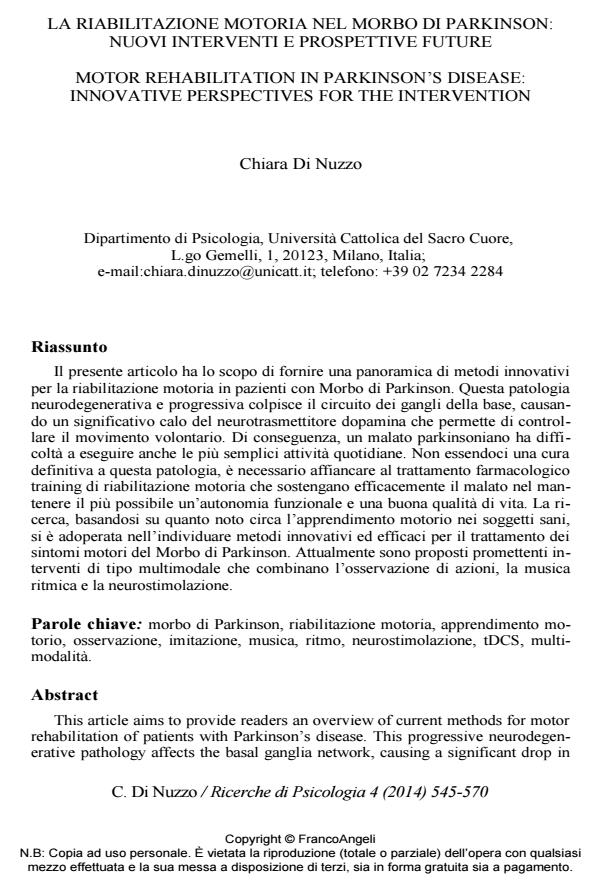La riabilitazione motoria nel morbo di parkinson: nuovi interventi e prospettive future
Titolo Rivista RICERCHE DI PSICOLOGIA
Autori/Curatori Chiara Di Nuzzo
Anno di pubblicazione 2015 Fascicolo 2014/4
Lingua Italiano Numero pagine 26 P. 545-570 Dimensione file 254 KB
DOI 10.3280/RIP2014-004002
Il DOI è il codice a barre della proprietà intellettuale: per saperne di più
clicca qui
Qui sotto puoi vedere in anteprima la prima pagina di questo articolo.
Se questo articolo ti interessa, lo puoi acquistare (e scaricare in formato pdf) seguendo le facili indicazioni per acquistare il download credit. Acquista Download Credits per scaricare questo Articolo in formato PDF

FrancoAngeli è membro della Publishers International Linking Association, Inc (PILA)associazione indipendente e non profit per facilitare (attraverso i servizi tecnologici implementati da CrossRef.org) l’accesso degli studiosi ai contenuti digitali nelle pubblicazioni professionali e scientifiche
Il presente articolo ha lo scopo di fornire una panoramica di metodi innovativi per la riabilitazione motoria in pazienti con Morbo di Parkinson. Questa patologia neurodegenerativa e progressiva colpisce il circuito dei gangli della base, causando un significativo calo del neurotrasmettitore dopamina che permette di controllare il movimento volontario. Di conseguenza, un malato parkinsoniano ha difficoltà a eseguire anche le più semplici attività quotidiane. Non essendoci una cura definitiva a questa patologia, è necessario affiancare al trattamento farmacologico training di riabilitazione motoria che sostengano efficacemente il malato nel mantenere il più possibile un’autonomia funzionale e una buona qualità di vita. La ricerca, basandosi su quanto noto circa l’apprendimento motorio nei soggetti sani, si è adoperata nell’individuare metodi innovativi ed efficaci per il trattamento dei sintomi motori del Morbo di Parkinson. Attualmente sono proposti promettenti interventi di tipo multimodale che combinano l’osservazione di azioni, la musica ritmica e la neurostimolazione.
Parole chiave:Morbo di Parkinson, riabilitazione motoria, apprendimento motorio, osservazione, imitazione, musica, ritmo, neurostimolazione, tDCS, multimodalità
Chiara Di Nuzzo, La riabilitazione motoria nel morbo di parkinson: nuovi interventi e prospettive future in "RICERCHE DI PSICOLOGIA " 4/2014, pp 545-570, DOI: 10.3280/RIP2014-004002